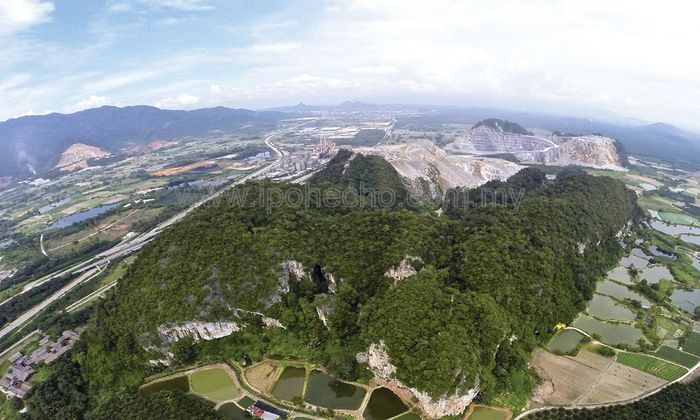Do Caves and Cement Mix?


Did you know that there are over 60 quarries in Perak alone? This is a staggering figure and is indicative of the extent of the local quarrying business.
As a state that takes pride in its heritage, colonial architecture and food, we have strayed from the single-most important symbol that makes Ipoh special – its limestone hills and caves that constitute a major portion of the quintessential Kinta Valley.


The cave is home to an endemic trapdoor spider named Liphistius kanthan which is listed as “endangered” and it is on the International Union for Conservation (IUCN) Red List. There is a lingering fear, among environmentalists, that mining activities by Lafarge may impact the survivability of spiders.
In light of this, Ipoh Echo and other media teams were given the opportunity to participate in the first ever media visit to the Lafarge Kanthan cement plant and the Kanthan Cave on Saturday, October 14. The visit was organised by Rantau PR on behalf of Lafarge. It was aimed at exposing sustainability measures taken by Lafarge to protect the flora and fauna of the cave and its surrounding areas, allaying fears that the company plans to mine the cave.
A safety briefing by Lafarge officials set the ball rolling before journeying into the cave. The interior of the cave seems almost unscathed by human activity except for some railings, ladders and ropes put in place by past visitors. Natural features include a 109m-high ceiling and a stream. Incidentally, the cave is 270m long.
Following the treacherous hike to-and-from the cave was a short ride back to the plant, where lunch was served and a tour was in order. Environmental concerns, other than those regarding the biodiversity, were deliberated.


When prompted with a question on their emission levels, he responded, “We always try to keep it as low as possible. In fact, our emission levels are well below the DoE standard of 50 as ours is between 30 and 40.”
Some of the future plans for Kanthan Hill will include conservation efforts where sensitive species are found, establishing a nursery for native species of the area with the objective of rehabilitating the quarry with these local species that not only includes the trapdoor spider, but also the bent-toed geckos, cave crickets and cave millipedes, amongst others.
The importance of the cave’s biodiversity has led to collaborations between Lafarge and several other organisations, governmental departments and universities, namely University of Malaya, Tropical Rainforest Conservation and Research Centre, Universiti Malaysia Sabah, Flora Fauna International, Department of Minerals and Geoscience Malaysia and Department of Environment Malaysia.
The question remains: will this preserve our biodiversity and satisfy the critics? Is enough being done?
Jack Foo


